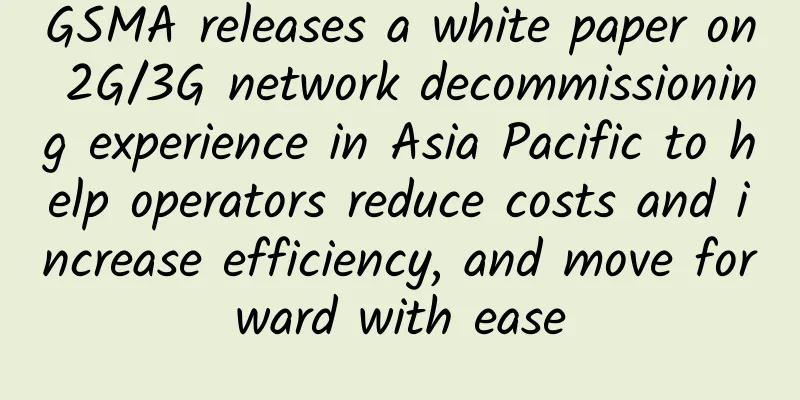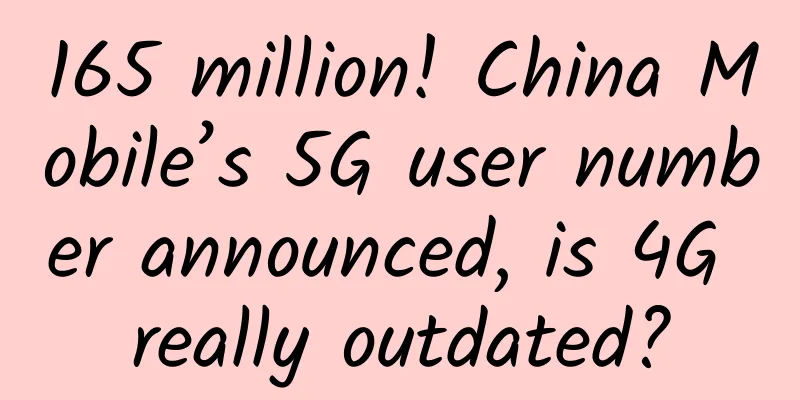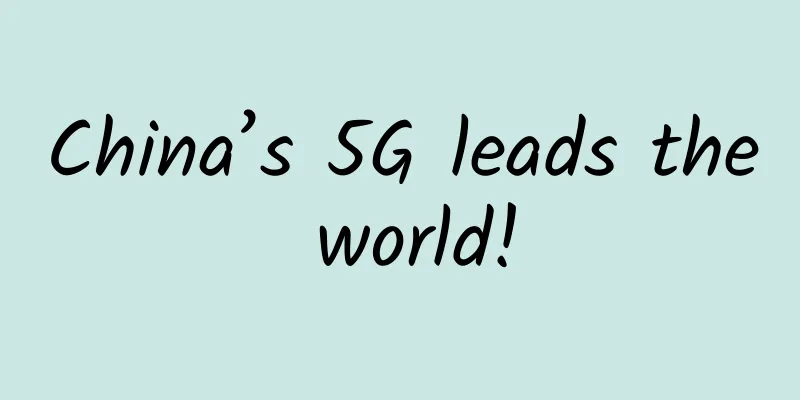GSMA releases a white paper on 2G/3G network decommissioning experience in Asia Pacific to help operators reduce costs and increase efficiency, and move forward with ease

|
With the popularity of smartphones and the rapid growth of wireless data traffic, operators around the world are exploring ways to reduce costs by shutting down old technology networks, or re-cultivating 2G/3G spectrum to deploy more efficient 4G/5G technologies. So far, 28 2G networks and 10 3G networks have been shut down worldwide, and other operators are actively planning. However, the withdrawal of 2G/3G networks is not a one-off process, and the process of withdrawal is not smooth. Faced with the temptation of reducing system and increasing efficiency, are operators ready? Asia Pacific is a pioneer in 2G/3G network withdrawal in the world. Operators in the region started 2G network withdrawal as early as 2008. So far, 21 2G networks and 5 3G networks have been shut down, accumulating rich experience. Recently, GSMA released the "Asia Pacific 2G/3G Network Withdrawal Experience White Paper". The report surveyed the withdrawal cases of six countries or regions in the Asia Pacific region, including Australia, New Zealand, Singapore, Japan, South Korea, and Macau, and systematically analyzed the benefits, risks and experience of operators' network withdrawal, providing a reference for the smooth withdrawal of global operators. 01 Driving factorsThe report points out that since the emergence of 3G networks, the proportion of mobile network data services has been increasing. In 2017, mobile data traffic in the Asia-Pacific region increased by about 86%. It is expected that by 2022, the Asia-Pacific region will account for 56% of global mobile traffic. The number of 4G users is growing steadily around the world. Globally, the number of 4G connections exceeded that of 2G or 3G in 2017, while in the Asia-Pacific region, 4G connections exceeded the sum of 2G and 3G in 2019. At the same time, the proportion of 2G connections has dropped significantly, and as of 2019, 2G connections accounted for 23%. Given the continued decline in connections and traffic, the gap between 2G revenue and expenditure is widening. Mobile communication technology is constantly innovating, and spectrum efficiency has been greatly improved. Since the introduction of GSM in 1991, the spectrum efficiency of mobile communication technology has increased by more than 200 times. Improving spectrum efficiency through spectrum refarming to meet the growing demand for data consumption is a common goal of regulators and operators. At the same time, spectrum refarming has also helped operators obtain prime spectrum for improving 4G/5G coverage. 2G/3G occupies the 850/900/1800/1900/2100MHz frequency bands, especially the Sub-1GHz band. Since low frequencies have great advantages in indoor coverage and penetration, using these scarce low frequencies for 4G/5G has become an important motivation for operators to withdraw from the network. Reducing operation and maintenance costs has become another motivation for operators to shut down 2G/3G networks, including: simplifying network operation and maintenance and RF optimization, reducing the cost of repairing spare parts for old equipment, reducing the risk of spare parts EoL and maintenance personnel shortage, reducing license fees, reducing tower space rental costs, reducing network energy consumption, etc. For example: One of the reasons for the withdrawal of 2G networks in South Korea is that the 2G network is at the end of its life cycle and key components cannot be purchased. 02Risk of network withdrawalThe main risks of delisting are:
However, the report points out that most of these risks can be avoided through careful planning. For example: Telstra has partnered with Netcomm Wireless and Sierra Wireless to launch the M2M Device Purchase Program, which allows customers to replace their existing 2G M2M devices over 24-month instalments. Telstra provided in-store courses on using smartphones, followed by a free phone giveaway campaign that saw more than 80,000 devices given to customers. Telstra reduced sales of 2G single-mode terminals and purchased a large number of low-cost smart devices with 3G and 4G capabilities or 4G-only capabilities and VoLTE support. Singapore operators have informed their global roaming partners of the 2G network shutdown plan and are providing 3G mobile phone rental services to roaming users at the airport. 03Experience SharingBased on case studies of Asia-Pacific operators, the white paper summarizes the following network decommissioning experiences: The transition period is usually about three years. Operators need to prepare for network withdrawal as early as possible before making a formal announcement, and it usually takes three years from the initial decision to complete the shutdown. However, if the adoption rate of the new generation of mobile technology is high, then this process may be shortened. (For example, in New Zealand, Spark, which shut down 2G in 2012, took a 2-year transition period, while 2 degrees, which shut down 2G in 2018, only took a 6-month transition period); Alignment with the old standard is a prerequisite Before shutting down the 2G network, the 3G network needs to achieve a coverage level that matches the 2G network so that 3G can provide a backup for the business. When shutting down the 3G network later, the same principle should be followed to ensure that the 4G VoLTE coverage matches the 3G coverage. In addition, the network withdrawal transition period needs to be long enough to continuously optimize the replacement network. Carefully plan marketing activities for user migration The withdrawal time point will be communicated through various media and channels, and intensive marketing will be carried out for new technology replacement packages and smartphones. Targeted communication plans are needed for specific groups of people, such as elderly consumers, who may even need to be provided with skill training on how to use smartphones. Targeted communication is also needed for 2B commercial customers, such as M2M customers. Assistance from regulators will help smooth 2G/3G network withdrawal Most service shutdowns internationally are led by operators, however, successful network shutdown projects usually require close cooperation between operators and regulators, so early involvement of regulators in the network withdrawal process is important. Singapore is a good example. Singapore's 2G network shutdown in 2017 was initiated with the consent of the regulator. The Infocomm Media Development Authority of Singapore (IMDA) helped announce the network withdrawal announcement to the public and participated in media publicity and roadshows with operators. The logos of operators and IMDA were presented in the network withdrawal publicity on TV, newspapers and posters, which helped to attract public attention and show that the network shutdown was officially recognized. If there were only the operator's logo, consumers might regard this as an advertisement. Motivating users also plays an important role These include: recommending the cessation of 2G/3G handset sales before a public announcement to accelerate migration to smartphones (e.g. Singapore); providing no additional charges for packages and no need to re-sign contracts after users migrate (e.g. Singapore); introducing attractive switching plans (which may include offering affordable smartphones and/or handset subsidies); and assisting with the recycling of handsets to prevent 2G/3G handsets from returning to the country’s networks. Keep one network and provide roaming services Retaining a thin 2G network to undertake roaming services is also an optional measure, such as Macau. Of course, in actual operation, the impact of network maintenance costs and competition needs to be considered. The release of the "Asia-Pacific 2G/3G Network Exit Experience White Paper" conforms to the current trend of 4G/5G large-scale deployment and 2G/3G reduction and efficiency improvement. It will effectively help operators to smoothly exit the network, move forward lightly towards the 4G+5G target network, and provide better services to users. |
<<: The UK finally stops using Huawei 5G equipment!
>>: From darling to outcast, is Huawei's 5G journey in the UK really over?
Recommend
How will the emergence of 5G affect AI federated learning?
As development teams scramble to build AI tools, ...
5G network construction: NSA or SA first?
Different from the era from 3G to 4G, the evoluti...
spinservers National Day promotion: 1Gbps unlimited traffic server from $99/month, 10Gbps unlimited traffic server from $599/month
spinservers is offering promotions for the Chines...
Cool down the false millimeter wave! Adhere to the road of confidence and look at the millimeter wave rationally
Last year, a manufacturer raised a very interesti...
Exploration of 5G and edge computing applications in the post-epidemic era
AT&T and many other leading wireless network ...
IT Viewpoint: Five major network challenges for 2019
Frank Scalzo, network director at data center ope...
CloudCone: $15/year KVM-512MB/15GB/5TB/Los Angeles data center
CloudCone is a foreign VPS hosting company founde...
Hosteons July promotion: Double memory or upgrade to 10Gbps port, starting at $16 per year, 5 data centers in Los Angeles/Dallas
Hosteons has just launched a promotion for July. ...
Exclusive reveal! How 5G can help secure large-scale events
The wonderful opening ceremony of the 2022 Beijin...
DYXnet selected as a member of the SD-WAN+Informatization "Pilot" program to jointly promote high-quality development of the industry
On May 27, 2024 , the 2024 SD-WAN+Innovation &quo...
How to unleash greater potential of new infrastructure
Recently, several domestic mobile communication o...
Wang Xijie, CEO of Yunfan Accelerator: Deeply cultivating network transmission and adhering to the "exquisite" route
[51CTO.com original article] As 2017 enters the c...
Several secrets to protect cabling in green data centers
At present, the degree of enterprise informatizat...
Everyone says China is strong in 5G, but what makes it so strong? Why is it so strong?
Liu Xingliang (hereinafter referred to as "L...
How to compare the total cost of ownership of on-premises unified communications and unified communications as a service
While total cost of ownership (TCO) can be a usef...


![[Black Friday] ExtraVM: 50% off VPS with 2GB or more memory, 1Gbps unlimited traffic, data centers in Los Angeles/Dallas/Netherlands](/upload/images/67cabcd3c3a84.webp)






